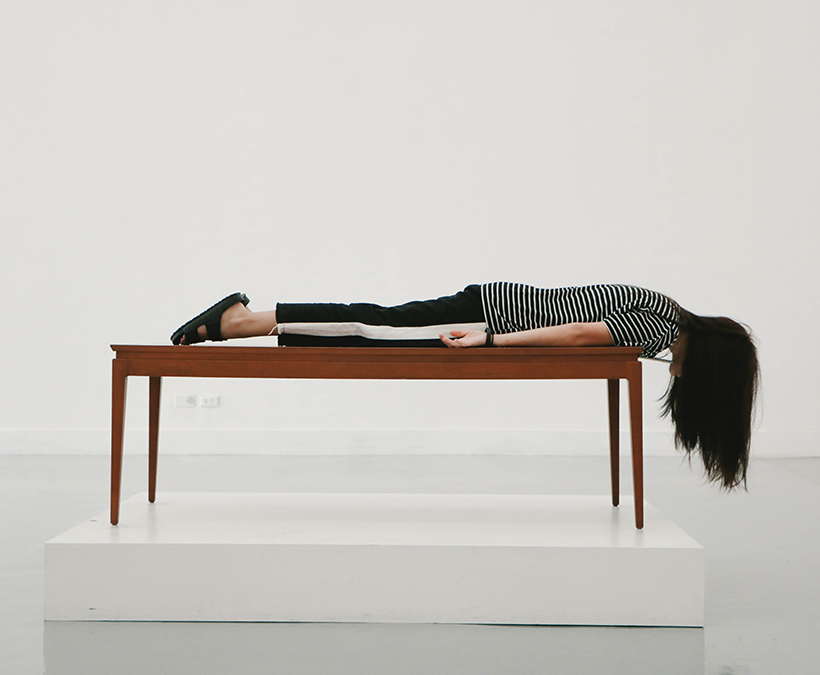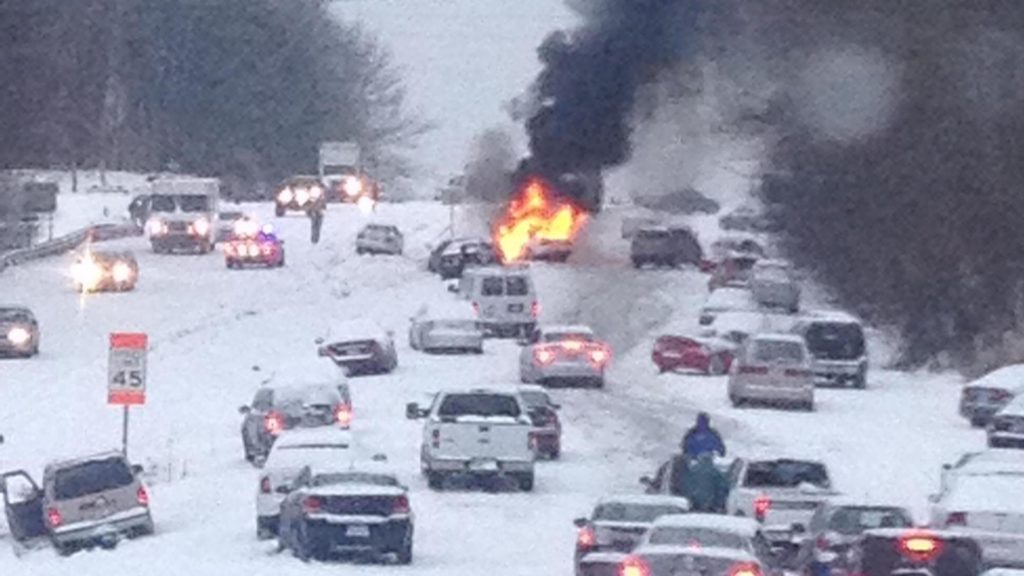
As markets reel from the effects of COVID-19, and we all collectively batten down the hatches, I turned to the one thing I knew I could count on in this crazy world: science. Thanks, in part, to the 2008 financial crisis and other world catastrophes, there’s a lot of information out there about consumer psychology during times of crisis.
While not directly applicable to a global pandemic, these studies might provide some insight into how your customers are feeling right now and offer up theories as to how that impacts their behavior online.
Consumer response to stress all comes down to how “in control” they feel
According to this journal article written by Kristina M. Durante, an Associate Professor of Marketing at Rutgers’ Business School, consumers’ varied responses to stress depends on how much perceived control they have over their environment.
Stress is an important factor to consider, as it affects people both psychologically and physiologically. According to the 2016 article, which was published in the Journal of Marketing Research, stress triggers an increase in cortisol in the body. From an evolutionary standpoint, cortisol helps humans react quickly and effectively to threats.
However, continuously elevated levels of cortisol can impact psychological functioning, leading to behaviors like social avoidance, defensiveness, introversion and hoarding. In this context, hoarding refers to spending and saving money. The article delves into the results of seven experiments that examined the effect of stress on consumer spending and saving. Here are the high-level takeaways:
Experiment #1 was conducted as a pilot experiment and established that stress leads consumers to save money, rather than using it to acquire non-necessities.
Duh. Moving on.
Experiment #2 found that stress made consumers more willing to save money, but that willingness disappeared if, after experiencing a stressful event, consumers’ sense of control is restored.
Experiment #3 found that stress increases the importance of acquiring necessities, unless—again—consumers perceive that they have a high amount of control over their lives and environment.
This hints to a phenomenon that we at Brooks Bell know all too well. In fact, we see it in our hometown of Raleigh, North Carolina every time an unexpected snowflake makes an appearance in the forecast.
While our winter-savvier neighbors to the North and West might collectively shrug at the sight of a falling snowflake and proceed about their day, our community responds by raiding grocery stores of bread, milk, water, and all the “essentials.”
Recommended Read: See How Enterprise Experimentation & Optimization Leaders Are Adapting in Response to COVID-19
North Carolinians don’t have a ton of experience with snow, and therefore, even when faced with an inconsequential amount of snow, they feel they have little control over their environment.

Experiment #4 found that consumers can feel stressed in situations in which they also have a high amount of control over the outcome. In these situations, they’re less likely to increase their money-saving activities.
Experiment #5 is also a little obvious but I’ll include it anyway. Stress increases consumer’s willingness to purchase products that they view as necessary, and decreases their willingness to buy products that are framed as non-essentials.
Experiments #6 and #7 demonstrated that stress can sometimes lead to increased spending when stress results from an event in which typical non-necessities become necessities. This also occurs when consumers are led to believe that they cannot change the amount of control they have over the environment (cue: apocalypse montage).
Read the article: The Effect of Stress on Consumer Saving and Spending
But hoarding is only one way that consumers deal with feeling out of control
In 2015, consumer psychologists Michal Herzenstein, Sharon Horsky, and Steve Posavac, published a study on the effects of terrorism on Israeli consumers. (Apparently, Israel is a common target for these types of studies due to the number of terrorist attacks that have happened there over the last 20+ years.)
The study found that Israeli consumers practiced a variety of avoidant behaviors in order to deal with their lost sense of control. These behaviors significantly disrupted their normal buying habits.
For example, they stopped shopping in stores and malls and instead began purchasing products online. They changed their normal shopping patterns to avoid situations that they perceived as risky.
They also moved consumption back into the home, a trend that was also seen in the United States after September 11, 2001, when people began to eat and entertain at home more often, significantly impacting the restaurant industry.
As it relates to COVID-19, the lack of control over our environment is palpable. The incidence of community spread means that the risk for catching the virus is no longer limited to just those who have traveled back from overseas. The delayed onset of symptoms means we don’t know whether or not we’ve been exposed to the virus.
Per science, it makes sense that many are buying out large quantities of essential items and retreating to areas where we can control our exposure.
The 2008 recession radically changed consumer behavior
A January 2011 article published in the International Journal of Economic Practices and Theories outlined the changes in new consumer buying behavior during the economic crisis. Here’s what they found:
Historically, the driving force behind consumption has always been a collective desire to improve our social condition by purchasing material goods. However, as people came to realize the paradox of consumerism–that is, having more really meant having less–consumers largely moved away from this line of thinking.
In the years leading up to the financial crisis, social scientists were beginning to spot new drivers for consumer activity. Specifically, they noted:
- Changes in what makes consumers feel good emotionally. Consumers were now more likely to seek real experiences and opportunities that they perceive to make life happier and more satisfying.
- Authenticity has become more important. Consumers had begun to reject goods produced and sold in mass, and instead value products and services that can claim to be authentic in some way.
- A change in the power dynamic between consumers and producers. Consumers had more power to dictate what they bought, as well as how and where the goods they purchase were made, and–for some products–what they were willing to pay for it.
The recession, of course, changed this trajectory a bit. The article summarized that the recession brought about a new sense of frugality, characterized by “a strong awareness of the value that dictates price, brand, and comfort.”
More specifically, post-recession consumers were more likely to justify buying products at a higher price – meaning, they were willing to buy higher-priced items, but only if there was a clear quality advantage.
Furthermore, brand loyalty became less of a driving factor for purchases. In fact, if a consumer considered themselves to be loyal to a brand, they were more likely to wait for a price drop or discount before making a purchase.
“Despite their anxiety, people are changing the status quo and take greater control of their present lives and futures. A primary way in which they will do this is through their consumption choices.”
Alina Flip, Analyzing the Main Changes in New Consumer Buying Behavior during Economic Crisis
The article points to a newer breed of consumers emerging from the recession: one who is highly sensitive to risk, looking to consume better, rather than more, and feels they can rely only on themselves.
Read the full article: Analyzing the Main Changes in New Consumer Buying Behavior during Economic Crisis
If things get really bad, you might want to rethink how you segment your customers
In April 2009 article titled How to Market in A Downturn, John Quelch, a professor at Harvard Business School, proposed that in order to survive an economic downturn, companies need to understand evolving consumer patterns and fine-tune their strategies accordingly.
At the time of writing the article, the recession was in full force, consumer confidence was at an all-time low, and marketers were faced with a profound challenge.
According to Quelch, “the first step in responding must be to understand the new customer segments that emerge in a recession.”
Consider how your company groups and segments your customers. Do you group them by purchase frequency, loyalty membership, or types of products? Or do you use a combination of demographic and psychographic attributes?
On-Demand Webinar: How to Use Behavioral Economics to Optimize Your E-commerce Website
According to the article, these segments may end up being completely irrelevant during times of economic crisis. Instead, Quelch proposes segmenting your customers based on their emotional response toward the crisis at hand.
To see this in action, check out how Quelch proposed segmenting consumers during the last recession:
The slam-on-the-brakes segment
- This group felt the most vulnerable and were the hardest hit financially during the recession
- They reduced spending by eliminating, postponing, decreasing, or substituting purchases
- This group included lower-income consumers as well as anxious higher-income consumers (particularly if health or income circumstances change for the worse)
The pained-but-patient segment
- These customers tended to be resilient and optimistic about the long term but felt less confident about the prospects for recovery or their ability to maintain their standard of living in the near term.
- Similar to slam-on-the-brakes consumers, they economized in all areas, though less aggressively
- This was the largest segment. It included the majority of households unaffected by unemployment and represented a wide range of income levels.
- As news got worse, this segment was at risk of migrating into the slam-on-the-brakes group
The comfortably well-off segment
- This group felt secure about their ability to ride out bumps in the economy
- They were buying at near-prerecession levels, though tended to be a little more selective with their purchases
- The segment consisted primarily of people in the top 5% income bracket, as well as those who are less wealthy but felt confident about the stability of their finances
Recommended Read: The Psychology of A Sale
The live-for-today segment
- This group carried on as usual and mostly remained unconcerned about their savings
- The recession extended their timetables for making major purchases
- They were urban and younger, and more likely to rent than to own
- They tended to spend on experiences rather than stuff, except for consumer electronics.
- They were unlikely to change their consumption behavior unless they become unemployed
Regardless of which group consumers belong to, Quelch also points out how they prioritized their purchase decisions by sorting products and services into four categories:
- Essentials – products that are necessary for survival or central to well-being.
- Treats – indulgences whose immediate purchase is justifiable
- Postponables – needed or desired items whose purchase can be put off
- Expendables – perceived as unnecessary or unjustifiable.
Studying other pandemics might not be that helpful
The 1918 Spanish Flu pandemic offers the closest parallel to the situation we’re in now, but there are problems with comparing the two.
First, some background: The Spanish Flu was a pandemic that is estimated to have infected about 27% of the world’s population (500 million people) and killed about 1.7% of the world’s population (between 30-50 million people).
The spread of the disease was, in part, attributed to soldiers returning home from World War I to a generally weakened post-war population. Historians also point to an absence of government coordination and little transparency due to wartime censorship of the media as causes for the disease’s escalation.
From an economic standpoint, the pandemic led to signficant labor shortages due to the extremely high death rates in prime working-age groups (most victims were between 15 and 30 years old). It also later led to increased wages and the more people relying on social security systems, such as income or food assistance, for support.
While the Spanish Flu pandemic offers some insight into what to do, what not to do and what we could see moving forward, there are a few problems with using it as a basis for comparison to COVID-19.
First, the world was emerging from the throes of World War I, which adds a contextual element that makes measurement and comparison nearly impossible. As this article put it, “economic historians do not agree on a headline figure for lost GDP because the effects of the flu are hard to disentangle from the confounding impact of the first world war.”
Second, as we’ve already established, the consumer psychological profile has also significantly changed over the last 102 years.
I’m aware that none of these studies offers any sort of direct resolution or recommendation for the current issue at hand. Relieving consumer stress when the source of stress is purely environmental offers a monumental challenge for companies, marketers and product leaders.
However, the existence of studies like these proves that both consumers and markets have faced tailwinds like this before, and despite the amount of uncertainty – this too shall pass.
In response to COVID-19, Brooks Bell is hosting a series of virtual, roundtable conversations on A/B testing and optimization through COVID-19.
Over the next few weeks, we’re bringing together the best and brightest senior and executive-level optimization leaders from Fortune 1,000 companies to share how COVID-19 has impacted their team, their business, and their strategy. Learn more and sign up here.











